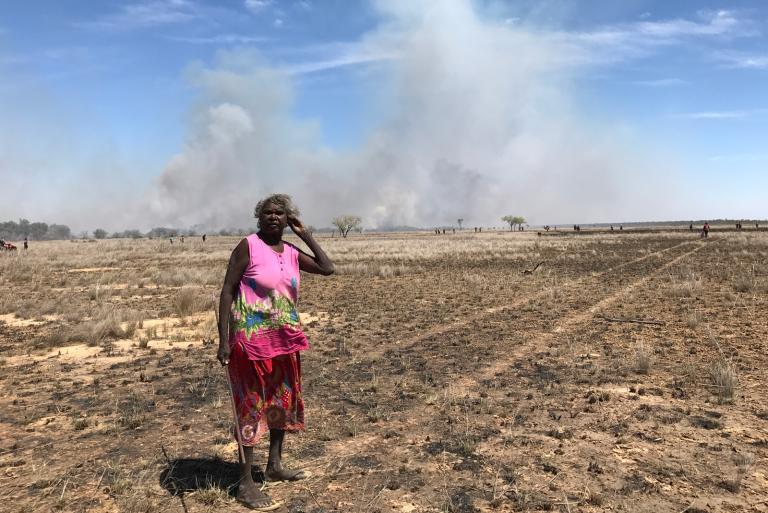
Journey West (Buwarrala Aryah)
Aboriginal Elders lead their community on a traditional walk across country to reconnect the children and youth to their culture.
Growing concern among young Aboriginal community leaders drew them to the idea of re-enacting a walk that hadn't occurred for almost 30 years.
'Livin' in town we've got too much fightin', too much drinkin', too many kids just walk the streets breakin' and stealin'. I reckon that's bad. Out bush is good, no beer, no drink, no breakin' in.'
The Buwarrala-Journey is a traditional walk for the Karrwa, Yanyuwa, Mara and Kurdanji peoples of the Gulf of Carpentaria in northern Australia.
Practised for generations as part of the initiation of young boys, it was last performed in 1988, and documented in the film, Buwarrala Agarriya – Journey East.
Gadrian Jarwijalmar Hoosan was 12 then and was one of four boys, Daru – boys who were prepared for their initiation ceremony. As an adult he has become a mentor to younger men.
In late 2017 the re-enactment of the walk, Buwarrala Aryah – Journey West, involved over 100 community members (children, their families, teachers and volunteers), covering a distance of 70 kilometres in seven days.
During the walk, Elders share their strong feelings of connection to land; they teach hunting techniques and traditional dancing, which often involves humour and historical storytelling. However, traditional owners worry about the security of their country and water because of the impacts of mining and fracking.
Through light scrub dotted with anthills, past billabongs and water lilies, and across a vast dry plain blackened by burning off, a group of children, youth and Elders embrace their cultural heritage.
The National Film and Sound Archive of Australia acknowledges Australia’s Aboriginal and Torres Strait Islander peoples as the Traditional Custodians of the land on which we work and live and gives respect to their Elders both past and present.



